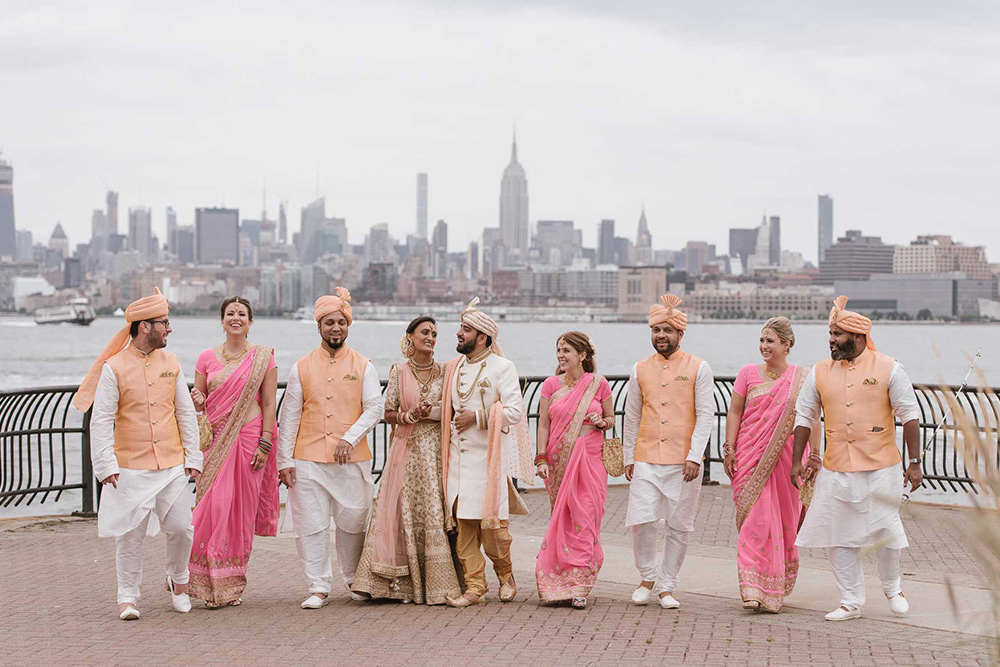-By Shreya Kanabar
Marriage is a sacred bond of love, life, and commitment. A wedding is a part of a marriage, it is one of the many ceremonies we have in Indian marriages. And the pre and post-wedding ceremonies make an Indian marriage different from the others, celebrating both the family’s culture and region and respecting each other’s rituals make the bond stronger between the families because after all, marriage is not between two people it is between two families!
As you may know, in India there is a total of 16 different sansakars to be performed throughout a man’s life and a wedding is one of them.
Weddings are all about fun, food, celebration, gifts, and grand arrangements. But when you look behind the scenes, you’ll find lots of steps and ceremonies that have been followed by the respective families.
The affair starts from the mangni ceremony, which you may refer to as an engagement or a sagai. To formally announce the rishta to the society, the bride and groom exchange rings to signify the engagement.
Now before the wedding day itself, most of the functions and ceremonies take place at both houses. In ancient times, 10-15 days before the wedding; all the females would get together at the bride’s home and start preparing for the Day. Back then there wasn’t any service like catering, the family members themselves would make everything at home. So singing songs and blessing the couple, day by day doing all the household work, the concept of pre-wed ceremonies comes.
Following this 3-4 days prior, ceremonies like grah shanti, mehndi, haldi, sangeet begins. A cleansing ceremony to stay away from every negative vibe, grah shanti puja is held. A yellow turmeric paste made for the bride and groom to apply all over their bodies before the wedding to bring out the natural glow. The application of the bridal mehndi, or henna design, to her hands and feet intended to temporarily dye the skin in intricate designs, which adds more beauty to the bride’s look. Sangeet is an event, held mostly the day before the wedding. It is essentially a pre-party for the big day where families and relatives come together to sing, dance, and celebrate the wedding festivities to come.
All the pre-wedding celebrations and rituals give time to both the families to get to know each other better and to bring all the family members together. It washes away all the nervousness from the bride and groom’s mine. It gradually prepares you for the big day.
Weddings are considered a life-altering thing in India, and it actually is. It isn’t just one event to get done simply, it is a whole package of preparations, sentiments, togetherness, aspirations, joy, and celebration of life. And the most important thing is to share this beautiful memory with your loved ones. It is something beyond words.
The same as pre-wed ceremonies, post-wedding ceremonies are like being thankful for getting all the things done in time and give blessings to the lovely couple for their auspicious journey.
Starting from the vidai, where the bride receives a formal ritually performed goodbye from her side of the family with a blend of joy and despair, the groom’s side finally leaves the wedding venue. Reaching their home a grih pravesh rasam is performed to welcome the bride. She is asked first to push a Kalash filled with rice with her right toe to make her entry to the house. This ceremony signifies that the family of groom has accepted her to be a part of their family. Then the couple plays some games to drift their mind from the vidai and to forget if anything negative has happened during the rituals. Mooh dikhai is a rasam where everyone from the groom’s side sees the newlywed bride and gives blessings to her. The next day or a day after a pag phera rasam is to be done by the bride, where she is taken to her parent’s house. It is believed that girls are the form of goddess Lakshmi and thus the bride comes back to her home to ensure the prosperity of her parents.
And so when it all comes together it really appears that pre-wedding and post-wedding ceremonies complete the whole thing and it is as important as the wedding ceremony.


